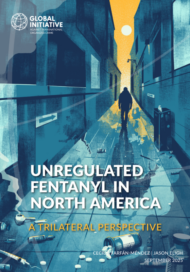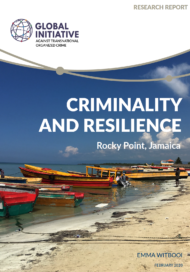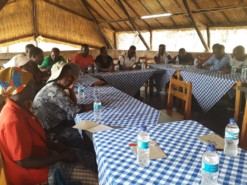Posted on 14 Mar 2016
Given the rapidly escalating rates of violent crime including homicides fuelled by illicit trafficking activities in Latin America, researchers are struggling to establish which are the most dangerous countries and places. Some recent publications suggest that El Salvador is the most violent country in the world, and San Salvador – its capital – the city where homicidal rate is the highest worldwide, whereas others argue that in fact Venezuela and Caracas hold that dubious honour.
One can then wonder: is there a way to actually rank homicide rates in Latin America and pinpoint which one is the most at risk? And why does it matter?
Over the past five years, the rise of violent crime and homicide associated with the illegal trafficking of drugs and other has reached unprecedented levels. 2015 figures in particular showed an alarming increase of homicide rates in the region (mostly San Salvador, Venezuela and Mexico), with gang and/or organised crime groups’ activities being reportedly either suspected or involved. With a 53% increase for San Salvador and 20% for Venezuela just between 2014 and 2015 brings the overall situation to a new level of seriousness.
Conflicts among local organised crime groups and gangs have had spill over effects on neighbouring countries that are equally fragile. As bloodsheds and murders are accumulating – sources even go as far as stating that: “El Salvador today is more violent than during the worst years of one of Latin America’s most vicious conflicts” – people are trying to escape insecure areas and flee to Mexico and the United States as a result.
In many cases, corruption is rising alongside the violence, with highly sophisticated organised crime groups, expert in adaptation, taking advantage of weak institutions and communities and undermining the rule of law.
In this complex environment, it is a considerable challenge to collect reliable data, monitor and evaluate programmatic responses. This increases the risks that badly managed responses add fuel to the fire.
Methodology is paramount to results-based research and investigations and the ability to get accurate measurements of a problem is the first step towards solving it. Evaluating the homicide rate is seldom straightforward, as a wide range of factors comes into play and cases can often be ambiguous. Inconsistencies in methodology between monitoring organisations make it tricky for experts to comparatively evaluate situations, and consequently suggest alternatives to curb these trends.
For example, as of today, experts seem to agree on San Salvador being the most violent country in the world, with a “national homicide rate of almost 116 per 100,000, more than 17 times the global average”. But the figures provided by San Salvador are based on the judicial system’s forensic data, whereas Caracas’ information on homicidal rate relies on “a non-representative sample of cadavers from the city’s crowded morgue”. This lack of homogeneity and the many divergences among sources from one country to another makes it even more complex to fully grasp the situation, produce reliable results, and therefore prevents relevant actors from suggesting options to address such threats.
The situation in Latin America and the Caribbean is critical and there are no simple answers to address the bond between illegal activities and security that jeopardises not only human lives but also entire states. The war on drugs that has been going on for decades and the more recent drug policy established by the United States to tackle drug trafficking related violence have not shown outstanding results in terms of security improvement in targeted areas.
Responses from governments, in turn, have mostly been focusing on law enforcement and security measures. However, researchers noticed that: “crime rates are positively correlated with underdevelopment, income inequality, voter turnout and, especially, the extent of family cohesion”, which implies that just as such groups can adapt quickly, state actors ought to address living conditions and opportunities for local families, which would strengthen their country’s social and economic fabric and eventually make it harder for criminal activities to thrive.
We need better, more comparable data and a set of indicators to understand the relationship between illicit markets, violence and development, so that we can think more effectively about our response.
This blog draws from the analytical work of Robert Muggah, and is part of our series of blogs on rethinking drug policy from an organised crime lens.
Image Source. Daily Mail.



